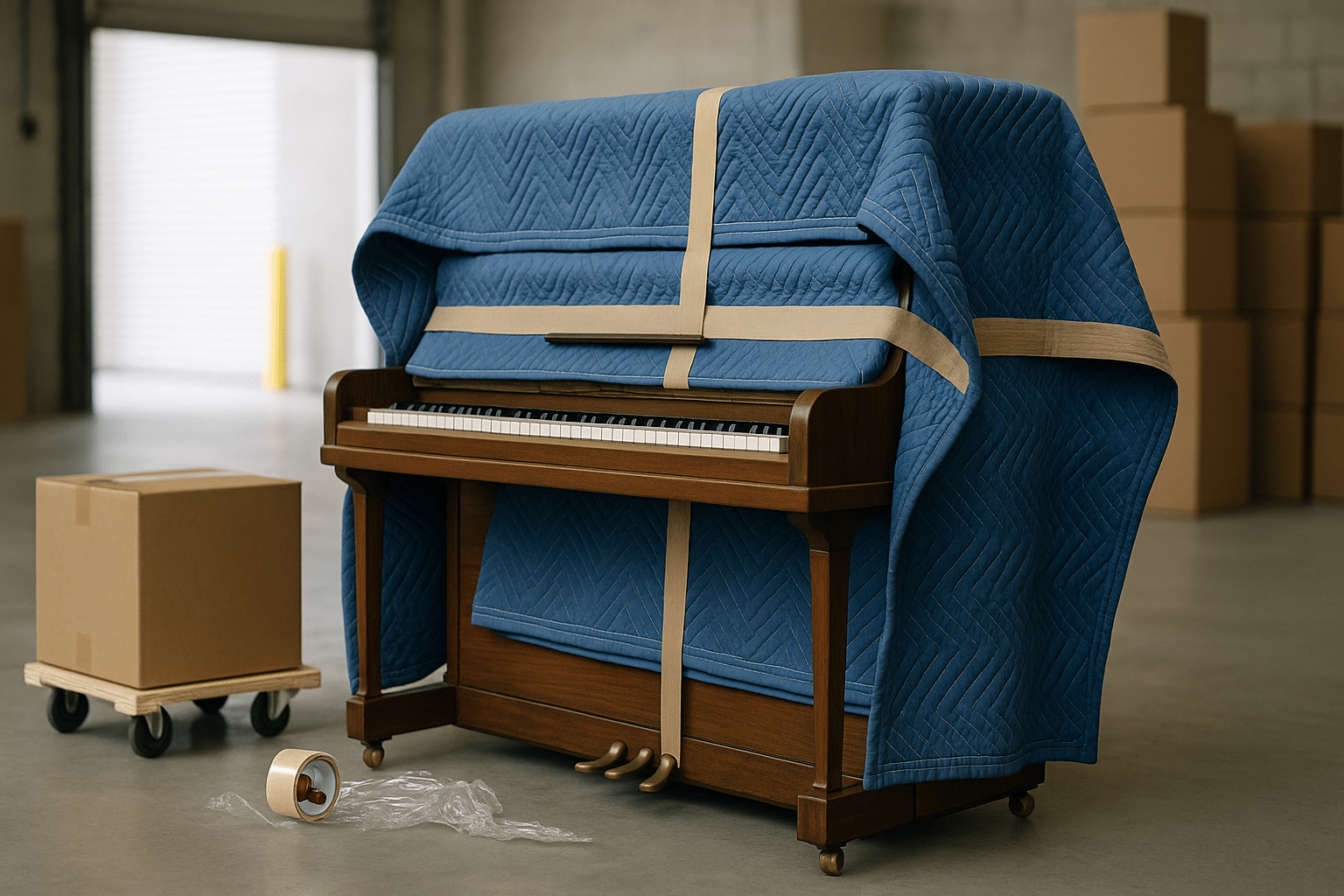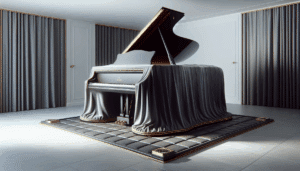If you’re a homeowner in Salt Lake City moving a piano into a studio — or out of one — you already know this: it’s not just heavy; it’s precious. A piano can be an heirloom, a workhorse for rehearsals, or the soul of a recording room. You want it safe, tuned, and placed exactly where the music feels right. Here’s a clear, friendly guide from Utah Piano Movers on how to prepare your piano for studio moving so the process is smoother than a legato line.
Contents
- 1 Who is this for (and why you’ll want to read on)
- 2 Quick checklist — what you’ll need (and why)
- 3 Step-by-step: How to prep your piano for the move
- 4 Studio-specific details — placement and acoustics
- 5 Salt Lake City specifics — weather, permits, and building rules
- 6 When to call the pros (really)
- 7 Ready to move? Let’s make it easy
Who is this for (and why you’ll want to read on)
This is for homeowners in Salt Lake City who are moving a piano into a private or commercial studio, whether it’s a baby grand, upright, or a digital hybrid. You might be the DIY type who’s rented a truck, or someone hiring professionals but wanting to do the prep work right. Either way, this article helps you avoid common mistakes — scratches, broken legs, cracked action parts, humidity surprises — that haunt people long after the truck leaves.
Quick checklist — what you’ll need (and why)
Let me explain: you don’t need a full hardware store, but having the right gear makes a huge difference. Here’s a compact checklist that covers the essentials.
| Item | Why it matters | Quick tip |
|---|---|---|
| Moving blankets & pads | Protects finish and corners from knocks. | Use thick quilted blankets; wrap twice if needed. |
| Piano board / skid | Distributes weight for lifts and dollies. | Essential for uprights and grands when moving down stairs. |
| Heavy-duty straps (ratchet) | Secures piano in truck to prevent sliding. | Label straps for tension order to avoid over-tightening. |
Other handy items: 3M or Gorilla tape for temporary labels, a Magliner hand truck for short moves, and a piano key cover (or soft cloth) to protect keys while working. If you’ve got time, a quick visit to Home Depot or U-Haul will get you most of this.
Step-by-step: How to prep your piano for the move
Here’s the thing: moving a piano is part logistics, part choreography. Pay attention, and it won’t be as nerve-wracking as you imagine.
1. Inspect and document — take photos
Before you touch anything, walk around the piano with your phone. Snap photos of scratches, the bench, pedals, and the case. Why? If something gets bumped you’ll have proof. You’ll thank yourself later — honestly, it’s that simple.
Also note the piano type, serial number (usually near the tuning pins), and any loose parts. Make a short list of fragile areas: lyre, pedal box, caster wheels, and music rack.
2. Tune or don’t tune — timing matters
Contradiction alert: you might think you should tune right before the move, but usually that’s not necessary. Temperature and humidity changes during transport can affect tuning. If the piano’s been stable and recently tuned, you’re fine; if it’s already out of tune by a lot, consider tuning after placement in the studio.
Here’s why: tuning before moving can be wasted effort. However, if the move is short and the environment will stay similar, a pre-move tune can be comforting.
3. Secure loose or removable parts
Remove the music desk and any removable legs or pedals if the model allows. Put screws and small parts in labeled bags and tape them to the instrument or keep them with your moving inventory. Wrap the legs in bubble wrap and moving blankets. For grands, secure the lid with a lid prop or strap — never trust gravity when you’re loading a lid into a truck.
4. Wrap it like you mean it
Use moving blankets over the entire body; then tape them lightly with 3M painter’s tape (it won’t harm the finish). For keys, cover with a soft cloth or the fallboard (keyboard cover). For tile or hardwood floors, place sliders or cardboard under casters to avoid scratches when rolling into place.
5. Lifting, carrying, and stairs
When you get to the heavy lifting, plan your path. Clear doors, remove rugs, open gates. For stairs, use a piano board and minimum four strong movers — seriously. A baby grand will need different technique than an upright; for grands, you often need to balance the weight on the tail and then pivot. If you’re unsure, hire professionals; it’s worth the peace of mind.
6. Loading into the truck
Center the piano in the truck and secure it with ratchet straps to the E-track. Keep it away from shifting cargo. Don’t put it near a heat source or against a wall that might trap condensation. The piano should be stored upright unless it’s a grand — those need special cradling. Again, label which side faces the truck door so movers can unload correctly.
Studio-specific details — placement and acoustics
You’re moving to a studio, so placement isn’t just about space. Sound matters. Position the piano so the soundboard faces open space when possible; avoid corners that deaden sound. If you’re setting up a recording studio, think about floor coupling (wood floors are better than slab concrete for tone), mic placement, and how the piano interacts with absorptive panels.
Also, trust your ears: a slight reposition can make a huge difference. You might be surprised how a few inches changes the warmth of a recording.
Salt Lake City specifics — weather, permits, and building rules
Salt Lake City brings seasons. Summers can be dry and hot; winters can be snowy and salted. During winter, salt and grit can damage finishes, so bring a clean cloth to wipe feet and the case. Humidity swings also affect action regulation and sound. If your studio has HVAC, let it run for a day before moving the piano in so the humidity stabilizes.
Check building rules: many condos and commercial studios in downtown SLC require move-in permits or elevator reservations. Ask your property manager about move windows; some buildings insist on protective floor runners.
When to call the pros (really)
There are moments to be brave and moments to call in specialists. If your piano is a grand, if the path includes narrow stairwells, or if you’re dealing with priceless antiques — call an experienced mover. Professionals bring specialized gear like skid boards, piano straps, and trucks with air-ride suspension. They also carry insurance, which, unlike a prayer, actually helps if something goes wrong.
Ready to move? Let’s make it easy
If you want the job handled by people who move pianos in Salt Lake City for a living — carefully, calmly, and with a sense of respect — call Utah Piano Movers. We know stairs, tight corners, and studio acoustics; we know when to be quiet and when to hustle. You can reach us at 801-396-7323 or Request a Free Quote. Let’s get your piano into its new studio the right way.




